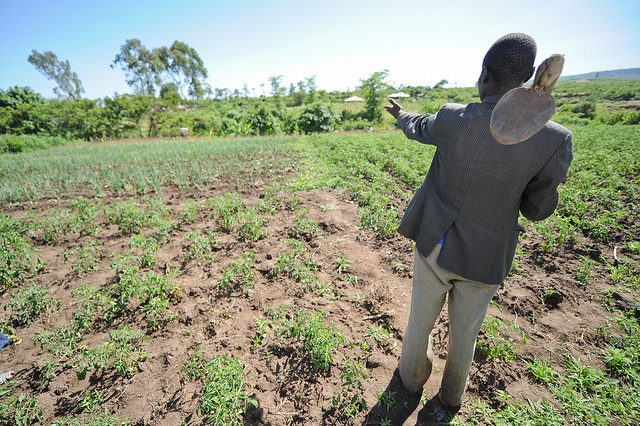By Cecilia Schubert, CCAFS
Senior researcher Alex De Pinto from the International Food Policy Research Institute (IFPRI) recently took the stage at the high-level event, Building resilience for food and nutrition security, to argue for the difficulty of making sweeping statements on which climate-smart agriculture practice is preferable to another, given a set context. He also made the case for differentiating between the terms “climate resilience building” and “climate adaptation”, especially when talking about climate-smart agriculture.

The terms resilience and climate adaptation are often used interchangeably, especially among climate-smart agriculture enthusiasts. Most of the time, people do not even reflect on the fact that these terms, although they might overlap, are not the same thing. This is confusing, to say the least.
De Pinto explained to the audience that resilience is the characteristic of a particular system such as agriculture and adaptation is an agent’s capacity to improve resilience and deal with change in its environment. This distinction supports the creation of a baseline, as one can compare resilience across multiple systems.
Advice on climate-smart agriculture for policy-makers: More difficult than one might think!
De Pinto also pointed out how difficult it is to provide clear and prescriptive climate advice to policy-makers related to climate-smart agriculture. This is especially so when it comes to selecting a climate-smart agriculture practice or technique in a specific region or area. It is not as straightforward as it might look from the outset.
De Pinto showcased an ongoing research project from India. He wanted to show how they have been analyzing such climate-smart agriculture practices as No Till”, “Alternate Wetting and Drying (AWD)”, and No Till combined with organic fertilizers, and how they contribute to the various pillars of climate-smart agriculture and perform under simulated climate extremes, i.e. how resilient they are.
The Food and Agriculture Organization of the United Nations (FAO) defines climate-smart agriculture as consisting of three main pillars:
- sustainably increasing agricultural productivity and incomes (food security);
- adapting and building resilience to climate change (adaptation); and
- reducing and/or removing greenhouse gas emissions (mitigation), where possible.
Preliminary results clearly show that it is very difficult to make general statements on which practices are better than others, given that overall performance depends on what the stakeholders are most interested in (i.e. value the most). Which of the pillars of climate-smart agriculture one wants to emphasize also makes a difference in how to evaluate the success of a particular farming practice. Resilience, with its complex meaning, make this type of multi-objective analysis even more complicated.
In addition, without knowing which pillar one wants to target and to achieve in the end, i.e. what is most important in a given area, it is really hard to make policy recommendations on which climate-smart agriculture practice or technique a given region should adopt.
De Pinto also pointed out the need for further discussions around the definition and boundaries within the term climate-smart agriculture, furthering the case that resilience and adaptation need to be separated.
Watch Alex De Pinto’s speech from the conference, in which he also reveals which climate-smart agriculture practice stood out in the research analysis:
The event Building resilience for food and nutrition security was organised by the International Food Policy Research Institute (IFPRI) in May 2014.
Presentation: Does Climate Smart Agriculture Lead to Resilience? from 2020resilience
About the author: Cecilia Schubert works as a Communications Officer at the CGIAR Research Program on Climate Change, Agriculture and Food Security (CCAFS), focusing on policy analysis.

Hi there! This article could not be written any better!
Going through this post reminds me of my previous roommate!
He continually kept talking about this. I will forward this article to him.
Fairly certain he will have a very good read.
Thank you for sharing!